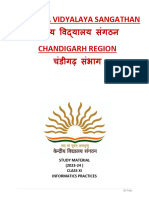0% found this document useful (0 votes)
98 views5 pagesComputer Basics and Components Guide
The document provides an overview of computer basics, including definitions, components, types, and functions of computers. It covers hardware and software distinctions, various number systems, computer memory, operating systems, networking, internet technologies, security, programming languages, cloud computing, IoT, and artificial intelligence. Charles Babbage is acknowledged as the 'father of the computer.'
Uploaded by
Apu Kumar GiriCopyright
© © All Rights Reserved
We take content rights seriously. If you suspect this is your content, claim it here.
Available Formats
Download as PDF, TXT or read online on Scribd
0% found this document useful (0 votes)
98 views5 pagesComputer Basics and Components Guide
The document provides an overview of computer basics, including definitions, components, types, and functions of computers. It covers hardware and software distinctions, various number systems, computer memory, operating systems, networking, internet technologies, security, programming languages, cloud computing, IoT, and artificial intelligence. Charles Babbage is acknowledged as the 'father of the computer.'
Uploaded by
Apu Kumar GiriCopyright
© © All Rights Reserved
We take content rights seriously. If you suspect this is your content, claim it here.
Available Formats
Download as PDF, TXT or read online on Scribd
/ 5


























































